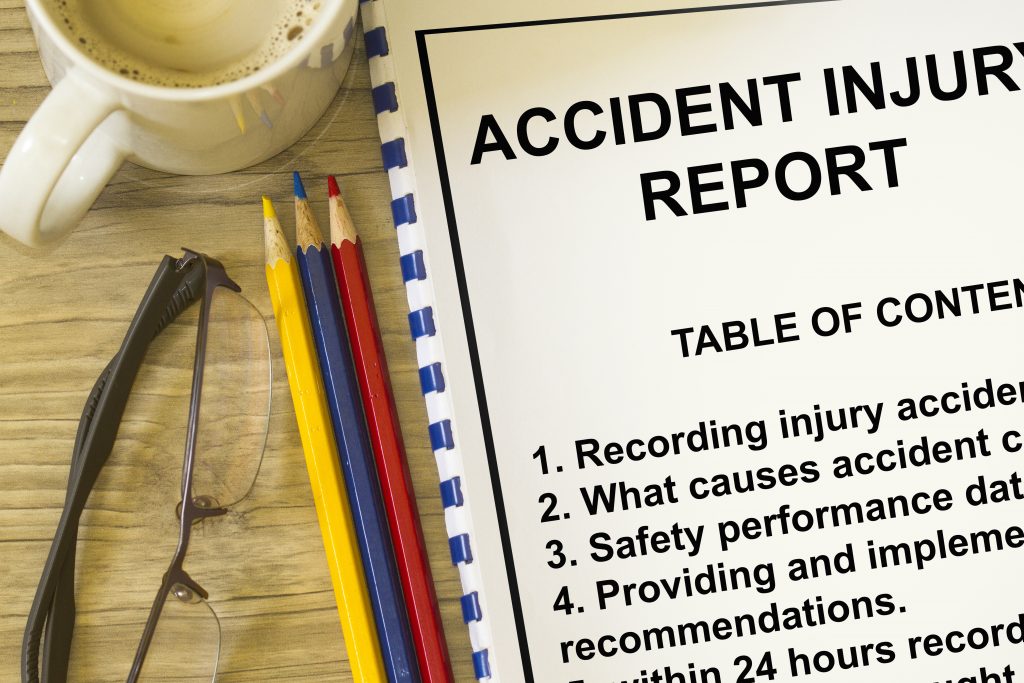
OSHA’s “Naughty List”: The Severe Violator Enforcement Program

Written by: Virginia McCormick, NES, Inc.

Federal OSHA’s Severe Violator Enforcement Program was developed to focus on the worst safety violators.
OSHA’s Controversial Severe Violator Enforcement Program
On June 18, 2010, federal OSHA implemented the Severe Violator Enforcement Program (SVEP). According to the agency, the SVEP was enacted to, “more effectively focus enforcement efforts on recalcitrant employers who demonstrate indifference to the health and safety of their employees through willful, repeated, or failure-to-abate violations of the OSH Act.” Following this directive, OSHA’s SVEP quickly became known as the “naughty list” of repeat offenders.
The SVEP has been around for nearly a decade, but its implementation has frequently been criticized. While OSHA has regarded the program as a success, critics have stated the SVEP is overly complicated, unfairly targets certain employers, and does not actually improve follow-up inspections. In any case, employers are encouraged to learn about the SVEP program, not just to avoid harsh sanctions and fines, but to ultimately provide a safer place of employment for all involved.
The History of the Severe Violator Enforcement Program
The history of OSHA’s Severe Violator Enforcement Program begins with the Enhanced Enforcement Program, known as the “EEP.” The EEP, which was originally established in 2003 and was designed with a similar purpose as the SVEP, became the subject of criticism around 2008 when a performance audit of the program was conducted by the Office of Inspector General (OIG) at the U.S. Department of Labor (DOL).
The OIG, which conducts audits of the effectiveness, efficiency, economy, and integrity of DOL programs, released the audit findings report in 2009, which covered OSHA’s EEP from 2003 to 2008. The audit ascertained that, among other problems, employers with reported fatalities were not properly identified and inspected under the EEP. The OIG ended the findings report with several recommendations for the agency including formation of a task force to improve the program, formal training provided for the program’s enforcement, and revision of the EEP directive.
Rather than go through the process of amending or revising the EEP as the OIG recommended, the Severe Violator Enforcement Program was introduced as a replacement. By narrowing the criteria, the SVEP was expected to redirect the agency’s focus on the worst offenders of safety violations.
It is important to note that the SVEP is a federal program, and states were required to either adopt the SVEP or, “establish their own equivalent program which must include enforcement procedures for identifying and taking action with regard to these recalcitrant and indifferent employers and for making referrals to, and responding to referrals from, Federal OSHA.” California opted to adopt the federal SVEP.

Infographic source: Safety + Health Magazine Article: A look at OSHA’s Severe Violator Enforcement Program
Severe Violator Enforcement Program Enforcement
According to the SVEP directive, a case against an employer is considered for the SVEP if it:
- Results from one or more willful or repeated violations related to the death of an employee or three or more hospitalized employees
- Results from two or more willful or repeated violations related to high-emphasis hazards, such as falls, grain handling, and amputations
- Results from three or more willful or repeated violations related to Process Safety Management (a program that focuses on avoiding the release of highly hazardous chemicals)
- Is categorized by OSHA as an “egregious” violation
In addition to the usual monetary fines, when a case meets one of the SVEP criteria, the employers are subject to various sanctions including:
- Enhanced follow-up inspections that are conducted in the same facility where the case originated
- Nationwide inspections of related worksites that are part of the same company
- Increased company awareness of OSHA enforcement, which comes in the form of letters, notifications, and news releases
- Enhanced settlement provisions including hiring qualified safety and health consultants to develop and implement effective compliance programs
Once in the SVEP, employers are faced with a long road to recovery. Violators remain on the list for a minimum of three years, even if all the issues that caused them to be on the list are addressed promptly after the listing. Additional incidental consequences of SVEP status include reputation harm, potential loss of current or prospective employees, and difficulties with securing business loans and lines of credit.
The two primary ways that violators get out of the program are by either “lining out” or “removal.”
Lining out is the result of a settlement agreement or a reclassification of a citation. A settlement would require violators to prove that factual changes to their case institute a removal from the program. Reclassification of a citation so that it no longer meets the criteria for SVEP status would also qualify as lining out. Lining out is the less likely route of getting out of the SVEP.
In contrast, removal is the more likely route. After being listed in the SVEP for a minimum of three years, OSHA will conduct a company-wide inspection. If all issues from the original case have been dealt with, all penalties and settlements have been paid out, and the violator has remained free from any new citations, the violator is removed from the program. If the violator fails to meet these criteria, the violator must remain in the SVEP log for an additional three years.
As of March 14, 2019, more than 600 businesses have been listed on the publicly-available SVEP case log. Businesses on the log range from corporate giants with tens of thousands of employees to many with fewer than a dozen employees. Three years after the initial implementation, OSHA released a report that stated the SVEP was meeting key goals including a significant increase in follow-up inspections and enhanced settlements.
“The program has succeeded in guiding OSHA enforcement toward recalcitrant employers by targeting high-emphasis hazards, facilitating inspections across multiple worksites of employers found to be recalcitrant, and by providing regional and State Plan offices with a nationwide referral procedure,” the agency stated in the white paper report on the program.
Criticisms: Is the Severe Violator Enforcement Program Unfair?
Despite replacing the already widely criticized EEP and being touted as a success by OSHA, the Severe Violator Enforcement Program began receiving its own criticism quickly after implementation. Major criticisms include the SVEP disproportionately targeting small employers, unique obstacles in executing follow-up inspections, and a lack of systemic safety issues being addressed when follow-up inspections are conducted.
Based on the SVEP case log, about 75% of cases involve companies with fewer than 100 employees. Some critics of the program argue that smaller companies will have less sophisticated safety programs and that placing these small companies in the SVEP only serves to damage them in the long run while leaving larger companies unscathed.
Additionally, when employers are placed onto the SVEP list, they can contest the citation if they feel they were placed in the program improperly. Nearly half of all SVEP cases are contested. However, the employer is still listed as a severe violator while the dispute is taking place. Critics argue that labeling employers as violators before having the chance to contest potentially unfair or misrepresented citations may cause irreparable damage to the company in the public eye.

Keep out of the SVEP by making sure you and your employees stay informed and trained on safety requirements.
Staying Off the Naughty List: How NES Can Help
Regardless of certain yet unresolved criticisms of the SVEP, employers are encouraged to abide by all best management safety practices. As mentioned above, once you end up on the SVEP naughty list, clearing your name is a long, difficult, and costly process. The best way to get off the list is to never get there in the first place.
Proper compliance with OSHA safety standards will always be the best way to reduce the possibility of ending up on the SVEP. Adherence to safety standards will help reduce the risk of fatalities, injuries, and hazards at worksites, which will in turn reduce the risk of repeated serious citations from OSHA. By being serious about proactive safety management processes that engage employees, employers can keep their workers safe. When it comes to staying off OSHA’s naughty list, employers must be informed of all required safety measures and dispense this information to employees through regular training conducted by qualified training providers.
NES can help your business or agency with its training or consulting needs. For more information about our environmental health & safety training and consulting capabilities, contact NES at 916-353-2360 / 1-800-NES-ADVISE (1-800-637-2384) or office@nesglobal.net.
References:
OSHA: Severe Violator Enforcement Program: White Paper
Society for Human Resource Management: Analysis: OSHA’s Severe Violators Program Prematurely Punished Employers
OSHA: Directives, Enhanced Enforcement Program (EEP)
OSHA Defense Firm: OSHA Severe Violator Enforcement Program: 5 Things Employers Should Know
Business Ethics: OSHA’s Wall of Shame: Agency Targets ‘Severe Violators’
U.S. Department of Labor Office of Inspector General: The OIG Mission
U.S. Department of Labor Office of Inspector General: Audit: Employers with reported fatalities were not always properly identified and inspected under OSHA’s enhanced enforcement program
OSHA: Directives, Severe Violator Enforcement Program (SVEP)
OSHA: SVEP Case Log (03/01/2019 – XLSX)
Safety + Health Article: A Look at OSHA’s Severe Violator Enforcement Program
